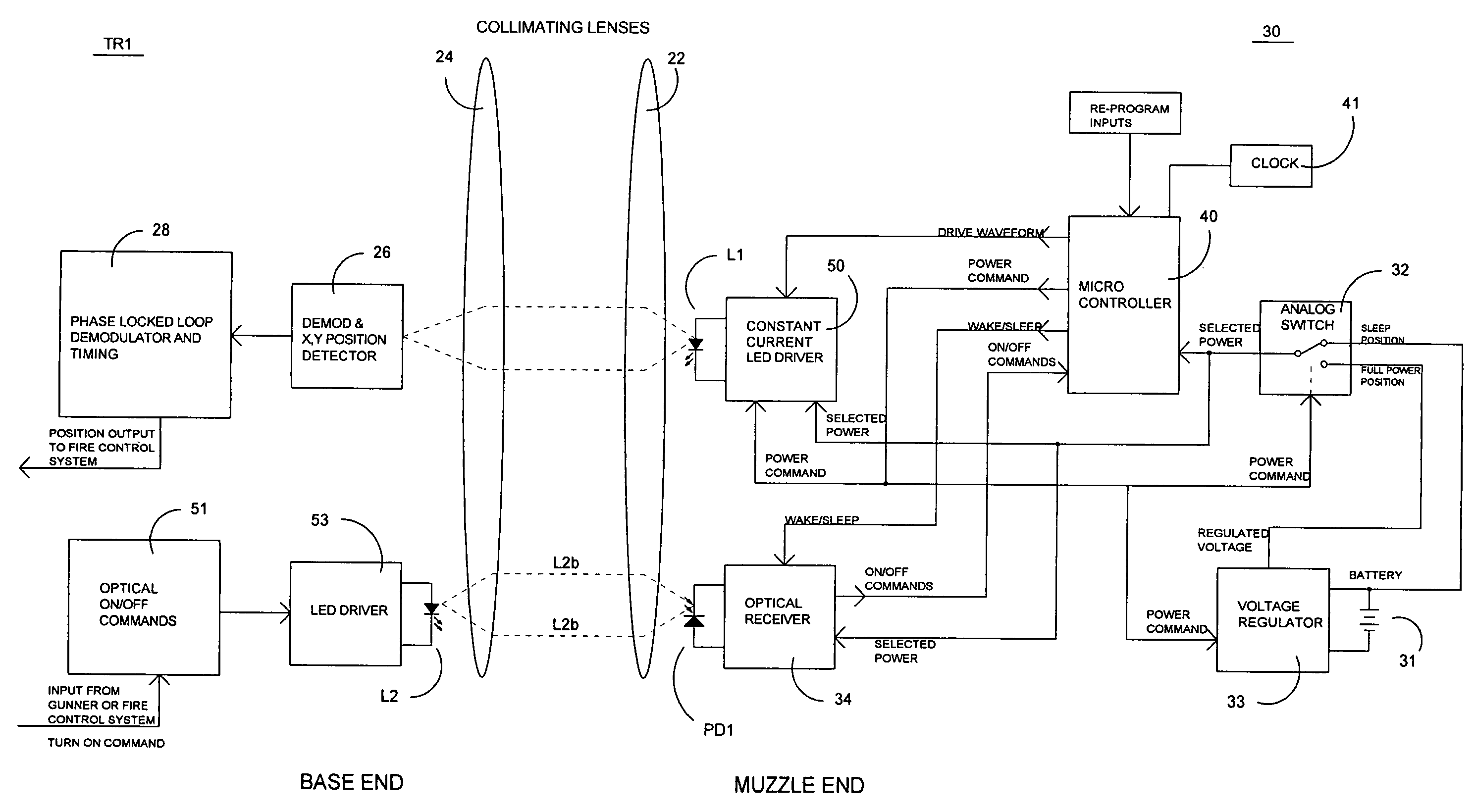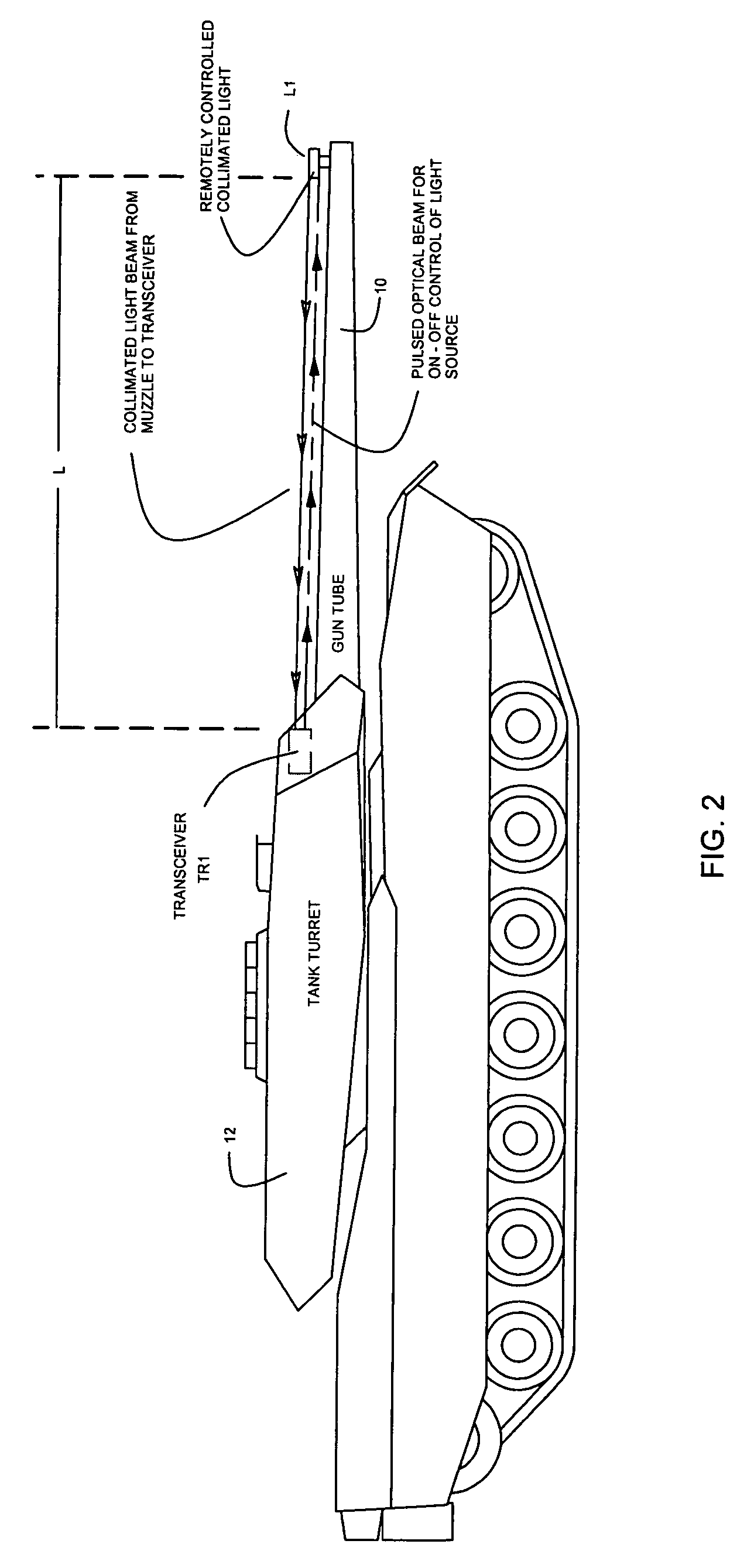Muzzle reference system
a reference system and muzzle technology, applied in the field of electronic devices, can solve the problems of reducing the effectiveness of armor, dmrs itself being more vulnerable to enemy fire, and presently used muzzles that do not allow dynamic measurement of muzzle to trunnion angle variations, etc., to achieve the effect of reducing the lateral displacement of optical beams at the input aperture of transceivers, reducing the size and weight of optics and transceivers
- Summary
- Abstract
- Description
- Claims
- Application Information
AI Technical Summary
Benefits of technology
Problems solved by technology
Method used
Image
Examples
Embodiment Construction
[0025]Referring to FIGS. 2 and 3, the gun tube (cannon) 10 extends a distance “L” from the tank turret (breech) 12. In systems embodying the invention, a remotely controlled collimated light source L1 and its associated light module 30 are located near the muzzle (distal or far) end of the gun tube 10; and a transceiver module, TR1, is mounted on or inside the tank turret 12, at the trunnion (proximal) end of the cannon 10. The light source L1 generates a beam of light aimed at the transceiver TR1 located a distance L from the light source L1. The light source L1 is, preferably, a battery powered collimated light source, which is aimed at the transceiver TR1. The transceiver, TR1, detects the collimated light beam and its angle, and from this computes variations in the angular motion of the muzzle relative to the trunnion. In the system embodying the invention shown in FIGS. 2 and 3, the transceiver TR1 also transmits intermittent optical commands (L2 to PD1) to selectivley turn the...
PUM
 Login to View More
Login to View More Abstract
Description
Claims
Application Information
 Login to View More
Login to View More - R&D
- Intellectual Property
- Life Sciences
- Materials
- Tech Scout
- Unparalleled Data Quality
- Higher Quality Content
- 60% Fewer Hallucinations
Browse by: Latest US Patents, China's latest patents, Technical Efficacy Thesaurus, Application Domain, Technology Topic, Popular Technical Reports.
© 2025 PatSnap. All rights reserved.Legal|Privacy policy|Modern Slavery Act Transparency Statement|Sitemap|About US| Contact US: help@patsnap.com



